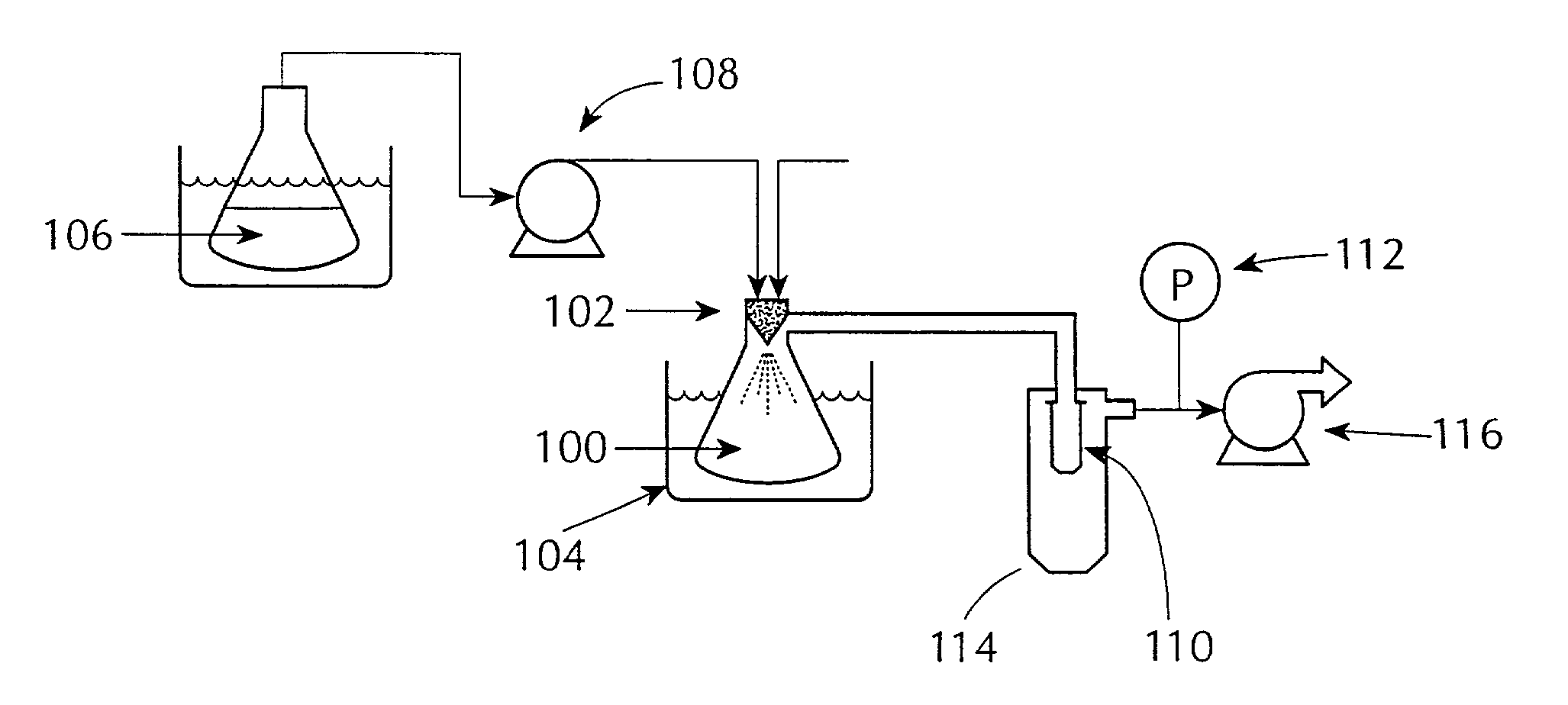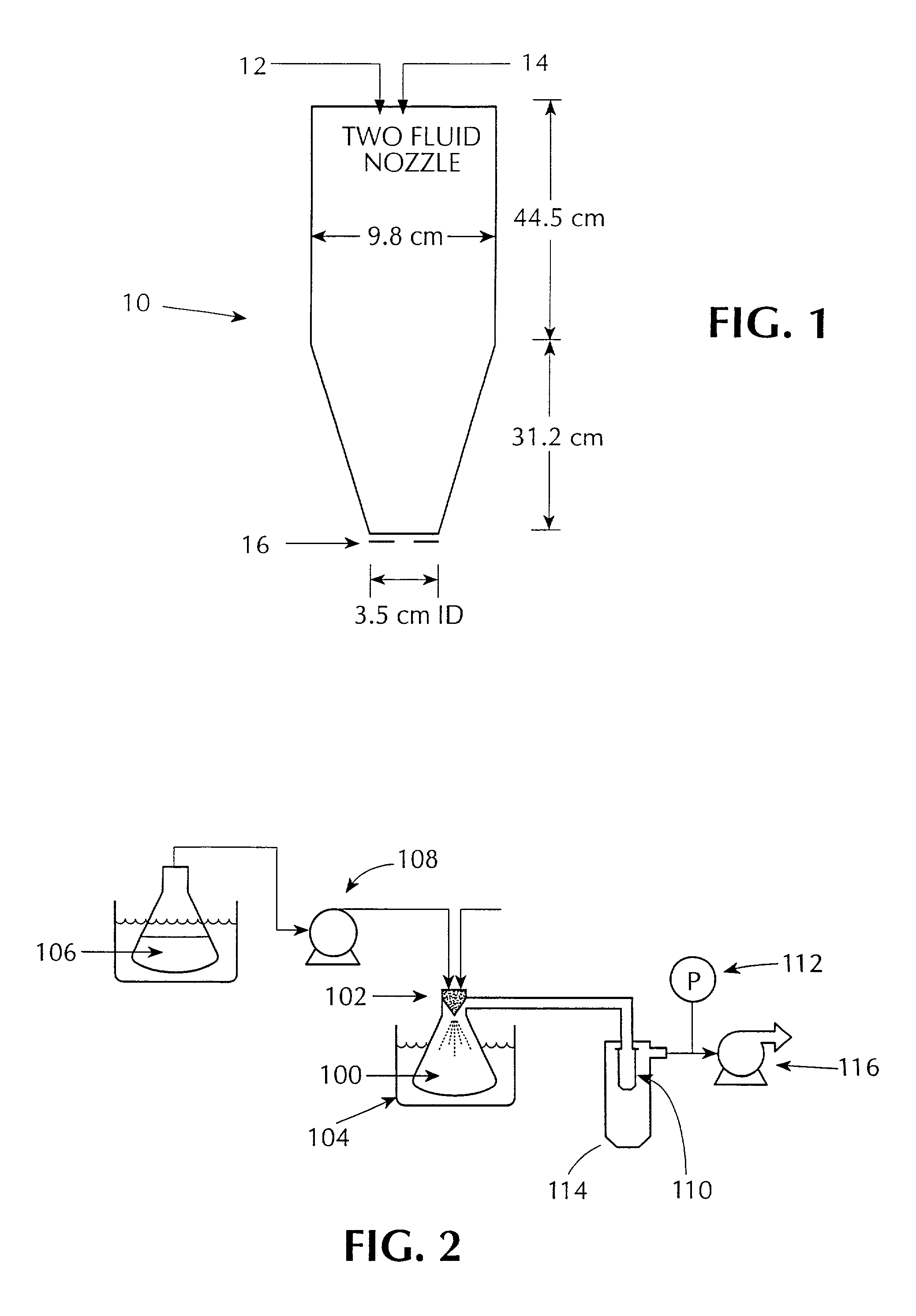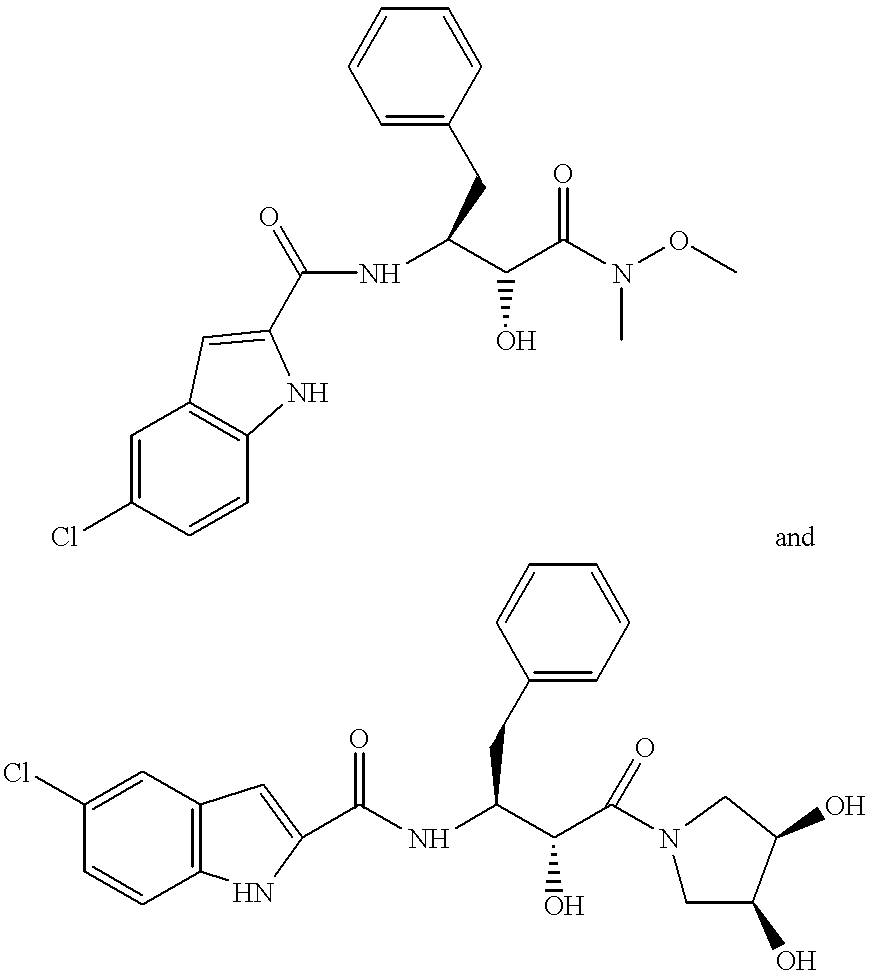Solid pharmaceutical dispersions with enhanced bioavailability
a bioavailability and solid technology, applied in the field of pharmaceutical compositions, can solve the problems of irregular absorption, poor bioavailability of low-solubility drugs, and unsuitability of hpmcas for their process, and achieve the effects of preventing crystallization of drugs and hpmcas, good formulatability and solubility, and rapid solvent removal
- Summary
- Abstract
- Description
- Claims
- Application Information
AI Technical Summary
Benefits of technology
Problems solved by technology
Method used
Image
Examples
example 1
[0090]A solution of compound and polymer was made by dissolving 133.0 mg of [R-(R*S*)]-5-chloro-N-[2-hydroxy-3-(methoxymethylamino)-3-oxo-1-(phenylmethyl)propyl]-1-H-indole-2-carboxamide (Compound 1, shown below) and 67.0 mg of HPMCAS-MF (Shin Etsu, containing 23.4% methoxyl, 7.2% hydroxypropyl. 9.4% acetyl, 11.0% succinoyl, MW=80*104, Mn=4.4*104) in 10 gm of HPLC grade acetone (Burdick & Jackson). The compound / polymer solution was then placed in a 20 mL syringe that was then inserted into a syringe pump.
[0091]
Solvent was rapidly removed from the above solution by spraying it into the mini spray-drying apparatus shown in FIG. 1, referred to herein as the “mini” spray dryer. The resulting material was a dry, white, substantially amorphous powder.
example 2
[0092]This example discloses an in vitro dissolution test termed the “syringe / filter” method. In this method the concentration of test compound in solution is determined as a function of time. Test solution is held in a syringe from which samples are expelled through a filter at pre-determined time points. In between expelling samples from the syringe, the syringe is rotated (50 rpm) on a wheel held in an oven at 37° C.
[0093]7.5 mg of the material of Example 1 was placed in an empty disposable 10 mL syringe (Aldrich, Fortuna). A 20 GA hypodermic needle was attached to the syringe, and 10 mL of a model-fasted duodenal (MFD) solution at 37° C. was drawn into the syringe. The MFD solution was composed of phosphate-buffered saline solution (82 mM NaCl, 20 mM Na2HPO4, 47 mM KH2PO4, pH 6.5, 290 mOsm / kg) containing 14.7 mM sodium taurocholate (Fluka) and 2.8 mM 1-palmitoyl-2-oleoyl-sn-glycero-3-phosphocholine (Avanti Polar Lipids).
[0094]The MFD solution was prepared using the following pro...
example 3
[0097]This example discloses an in vitro dissolution test termed the “centrifuge” method. This method was used to test the dissolution of material made by essentially the same method as that described in Example 1 except that the concentration of Compound 1 was decreased by a factor of 2 to 66.5 mg such that the ratio of compound to polymer was 1:1. (see Example 7, Table I).
[0098]In a 37° C. controlled temperature box, 1.8 mg of solid product from Example 1 was accurately weighed into an empty microcentrifuge tube (polypropylene, Sorenson Bioscience Inc.). The theoretical maximum concentration of compound in solution (e.g., if all compound dissolved) was 383 μgA / ml [1.8 mg dispersion (1000 μg / 1 mg) (0.5 μg compound / μg dispersion) (0.764 compound assay) / 1.8 ml=393 μgA / ml]. This value is termed the theoretical maximum supersaturated concentration and is abbreviated Theoretical MSSC. 1.8 mL of a 37 C phosphate buffered saline solution (8.2 mM NaCl, 1.1 mM Na2HPO4, 4.7 mM KH2PO4, pH 6.5...
PUM
| Property | Measurement | Unit |
|---|---|---|
| diameter | aaaaa | aaaaa |
| pH | aaaaa | aaaaa |
| diameter | aaaaa | aaaaa |
Abstract
Description
Claims
Application Information
 Login to View More
Login to View More - R&D
- Intellectual Property
- Life Sciences
- Materials
- Tech Scout
- Unparalleled Data Quality
- Higher Quality Content
- 60% Fewer Hallucinations
Browse by: Latest US Patents, China's latest patents, Technical Efficacy Thesaurus, Application Domain, Technology Topic, Popular Technical Reports.
© 2025 PatSnap. All rights reserved.Legal|Privacy policy|Modern Slavery Act Transparency Statement|Sitemap|About US| Contact US: help@patsnap.com



